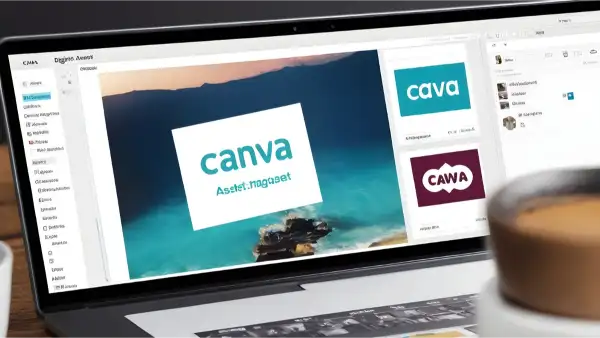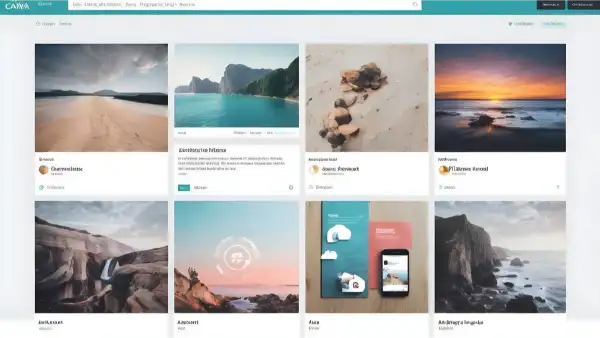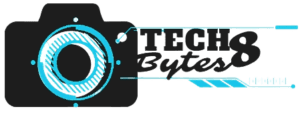Is Canva a DAM?
Canva is a popular online platform. It allows users to create stunning graphics, documents, videos, and more with ease. But is Canva a DAM, or digital asset management system? In this article, we will explore what a DAM is. We’ll also discuss why it is important for marketers. Finally, we’ll compare Canva to other DAM solutions.

How does Canva compare to other DAM solutions?
Canva is not a DAM, but rather a digital asset creation tool. Canva’s value is that it allows users to create a wide variety of images, documents, videos, and more. This is true even if they don’t have a strong background in design. Canva also offers some features to help users organize and share their assets. For example, users can use folders, teams, and links.

But, Canva does not have the full functionality of a DAM, such as:
Advanced search and filtering options for finding digital assets
Version control and history tracking for editing and updating digital assets
Workflow and approval management for reviewing and approving digital assets
Metadata and tagging features for adding and managing information about digital assets
The software has integration and distribution capabilities. It can share and publish digital assets to various platforms and channels.
Thus, Canva is best used as a complement to a DAM system, rather than a replacement
What is a DAM?
A DAM, or digital asset management system, is a centralized location. It organizes, stores, and provides efficient access to a library of digital assets. Digital assets are files used for communication. These include images, audio, video, logos, and graphics. A DAM system helps users manage their digital assets. It improves workflow, enhances brand consistency, and reduces costs and risks.

A DAM system typically has the following features:
Metadata
describes the content, context, and characteristics of a digital asset. Metadata helps users find, filter, and sort their assets. They can do this based on various criteria, such as keywords, categories, tags, and dates.
Search:
Search is the ability to locate and retrieve digital assets using metadata or natural language queries. Search helps users to quickly and easily find the assets they need for their projects.
Version control:
Version control is the ability to track and manage the changes made to a digital asset over time. Version control helps users avoid duplication, confusion, and errors. It is especially helpful when working with many versions of the same asset.
Permissions:
Permissions are the rules that define who can access digital assets. They also define who can view, edit, share, and download them. Permissions help users control the security and privacy of their assets. They also prevent unauthorized or inappropriate use.
Collaboration:
Collaboration is the ability to work together with other users on digital assets. Collaboration helps users share feedback, comments, and annotations on their assets. It also streamlines their creative and approval processes by enabling approvals.
Distribution:
Distribution is the ability to publish and deliver digital assets to various channels and platforms. These include websites, social media, and email. It helps users optimize their assets for different formats, resolutions, and devices. It also helps them reach their target audiences.

Can you explain more about metadata and tagging features in a DAM?

Metadata describes the main data of a digital asset. It includes its format, size, dimensions, author, and location. Tagging adds keywords or labels to a digital asset to make it easier to find and organize. Both metadata and tagging are important for a DAM because they help users to:
Search for the right digital asset using various criteria, such as file type, date, category, and tag.
Organize and manage the digital assets in a logical and consistent way. This can be done through folders, collections, albums, and so on.
Edit and update the digital assets with the latest information. Include the version, status, approval, and so on.
Share and distribute the digital assets to different platforms and channels. They include websites, social media, and email.
Different DAM solutions may offer various types and levels of metadata and tagging features. Some common types of metadata and tagging features are:
Inherited metadata:
This is the metadata that comes with the digital asset by default, such as its format, size, and dimensions. This metadata is usually not editable by the user. But, users can use it for searching and filtering.
Embedded metadata:
The metadata may come with the digital asset, such as its author, camera, and GPS. It enables users to search and filter. It can also display extra information about the asset. The user can usually edit this metadata.
Structured metadata:
This is the metadata. The user can add it to the digital asset using predefined fields and values. For example, title, description, and category. The DAM system usually requires this metadata. Users can use it for searching, filtering, and enforcing brand and legal rules.
Tags:
These are the keywords or labels that the user can add to the digital asset using free text. Examples include product, event, and theme. Tags are usually optional and flexible. You can use them for searching and filtering. They can also enhance the user experience and creativity.
I hope this helps you understand more about metadata and tagging features in a DAM.
Why is a DAM important for marketers?

A DAM system is a valuable tool for marketers. It helps them create, manage, and distribute their digital assets more effectively and efficiently. Some of the benefits of a DAM system for marketers are:
A DAM system improves productivity by saving time and resources. It eliminates the need to search for assets in many locations. These locations include email, cloud storage, and hard drives. A DAM system simplifies the design and editing process. It provides templates, presets, and integrates with other tools.
A DAM system ensures digital assets align with brand guidelines. It includes colors, fonts, and logos. It also enables users to quickly update and change assets across all channels and platforms. This ensures consistent and accurate brand messaging.
A DAM system reduces costs and risks associated with digital asset management. These include licensing fees, storage space, bandwidth, compliance, and security. A DAM system also helps users avoid legal issues, such as copyright infringement. It provides clear and traceable ownership and usage rights.
How does Canva compare to other DAM solutions?
Canva
is a great tool for creating digital assets, but it is not enough for managing them. For that, marketers need a dedicated DAM solution. It must handle the complexity and volume of their digital assets. Many DAM solutions are available in the market. Each has different features, benefits, and drawbacks. Some of the popular DAM solutions include:
Adobe:
Adobe is a leading provider of creative software and cloud services. Adobe DAM is part of the Adobe Experience Manager suite. Adobe DAM is a richly featured and robust solution. It can handle any type of digital asset. It can also integrate with other Adobe products and third-party platforms. But, Adobe DAM is also expensive and complex. It may require a lot of training and customization to use effectively.
Bynder
: Bynder is a cloud-based DAM solution that focuses on ease of use and scalability. Bynder allows users to upload, store, organize, and share their digital assets from anywhere and any device. Bynder also offers AI-powered search, a brand portal, creative project management, and analytics. Bynder is user-friendly and flexible. However, it may lack some advanced features and integrations that larger organizations may need.
Brandfolder:
Brandfolder is a cloud-based DAM solution. It aims to simplify and streamline the digital asset management process. Brandfolder enables users to upload, store, organize, and share their digital assets. It is in a secure, centralized location. Brandfolder also offers a drag-and-drop interface. It has custom branding, smart search, and insights. Brandfolder is simple and intuitive. However, it may lack the features and flexibility needed for complex and diverse digital assets.
Canto:
Canto is a cloud-based DAM solution. It helps users manage, share, and distribute their digital assets. Canto allows users to upload, store, organize, and search their digital assets. They can use metadata, tags, and categories. Canto also offers features such as workflow management. It includes collaboration tools, permissions and access control, and integrations. Canto is reliable and affordable. But, it may not offer the same level of creativity and innovation as other solutions.
Conclusion
Canva is a powerful and popular tool for creating digital assets, but it is not a DAM. Marketers need a dedicated DAM solution. It must offer more features and functionality than Canva. They need it to manage their digital assets effectively. Marketers can choose from different DAM solutions. For example, they can choose Adobe, Bynder, Brandfolder, or Canto. The choice depends on their needs and budget. A DAM solution can help marketers improve their content creation process. It can also enhance their brand consistency and increase their marketing performance.
